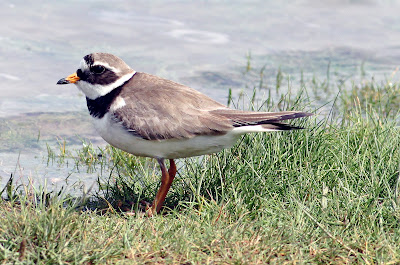A quick visit to the feeding staion today relocated the Chaffinches, about 60+ of them together with 5+ Bramblings, although in the raging wind I couldn't find more than 2 Reed Bunting and 20 Goldfinch. A couple of the feeders were half full, probably as a result of the wind emptying the contents rather than any Goldfinches. Looks like the wind may subside later in the week allowing me to do a spot of ringing.
I haven’t quite finished with Fuerteventura, and during the currently wet and wintry weather, combined with the lack of local news and pictures, I’m posting mop-up pictures from the holiday of 12th to 26th January. As the post title implies, these pictures were taken along the rocky shores close to Costa Calma.
I haven’t quite finished with Fuerteventura, and during the currently wet and wintry weather, combined with the lack of local news and pictures, I’m posting mop-up pictures from the holiday of 12th to 26th January. As the post title implies, these pictures were taken along the rocky shores close to Costa Calma.
There was a Greenshank around for a day or two, an individual that allowed a slightly closer approach than the wary birds we see in the UK.
Greenshank
Greenshank
Greenshank
Ringed Plovers were sometimes around but never particularly accommodating.
Ringed Plover
Daily stars were the Sanderlings and Turnstones, in some spots the birds had become almost totally fearless of man.
Sanderling
Turnstone
Sanderling
One or two Whimbrels could be seen most days. More Whimbrel pictures soon when Another Bird Blog will devote a full post to the species based on a number of pictures.
Whimbrel
The Common Sandpipers I saw were just as wary as our UK ones, never allowing a close approach.
Here’s a Fuerteventura rarity, an Oystercatcher, quite a way from its normal range. It was just a single bird seen on one day and not a very good picture into the sun.
Oystercatcher
It wasn’t all waders on the rocks. The Spanish Sparrows used the shore too, but just for a change on a foreign holiday, I didn't see any House Sparrows.
There's much more about Whimbrels soon from Another Bird Blog. Stay tuned to read all about it.



































































.jpg)














